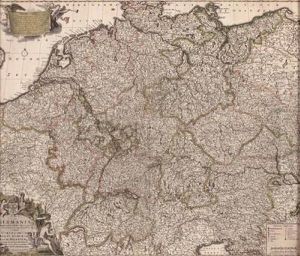Frederick De Wit Paintings
Frederick de Wit, also known as Frederik de Wit, was a prominent Dutch cartographer and artist of the 17th century, born in the year 1630. While his exact birthplace is not clearly documented, it is believed that he was born in Gouda or Amsterdam in the Netherlands. De Wit established himself in Amsterdam, where he would become a central figure in the mapmaking and publishing world of the Dutch Golden Age, a period marked by great wealth, cultural richness, and global trade expansion for the Dutch Republic.
De Wit began his career in Amsterdam around 1648 and by 1654, he had purchased a house on the Damrak, which served as both his home and business. In 1655, he released his first cartographic work, an atlas with 17 maps. Over time, he expanded his business to include wall maps, sea charts, town plans, and atlases. He became well-known for the quality and decorative style of his work. De Wit’s maps were highly regarded for their detail and accuracy, as well as their ornate aesthetic, often featuring elaborate cartouches and vivid coloration.
His most famous work is the 'Atlas Maior', also known as the 'Great Atlas', which contained over 150 detailed maps. De Wit also produced a remarkable sea atlas, 'Orbis Maritimus ofte Zee Atlas', which was highly prized among contemporaries for its utility and beauty. In addition to these, he frequently updated and expanded his atlases to reflect new discoveries and the latest geographical knowledge of the time.
De Wit's legacy extends beyond the maps themselves to his influence on the decorative map style of the period. He was a contemporary of other great cartographers, such as Joan Blaeu and Willem Janszoon Blaeu, with whom he competed in the flourishing Dutch cartography market. De Wit's maps were widely distributed throughout Europe, and his atlases were often found in the libraries of the affluent and educated.
Frederick de Wit passed away in 1706 in Amsterdam. His business was continued by his wife and son until it was eventually sold off. De Wit's maps and atlases continue to be highly valued by collectors and historians for their beauty and as historical documents of the time. His contributions to the art of mapmaking have cemented his place as one of the leading figures in the history of cartography.

